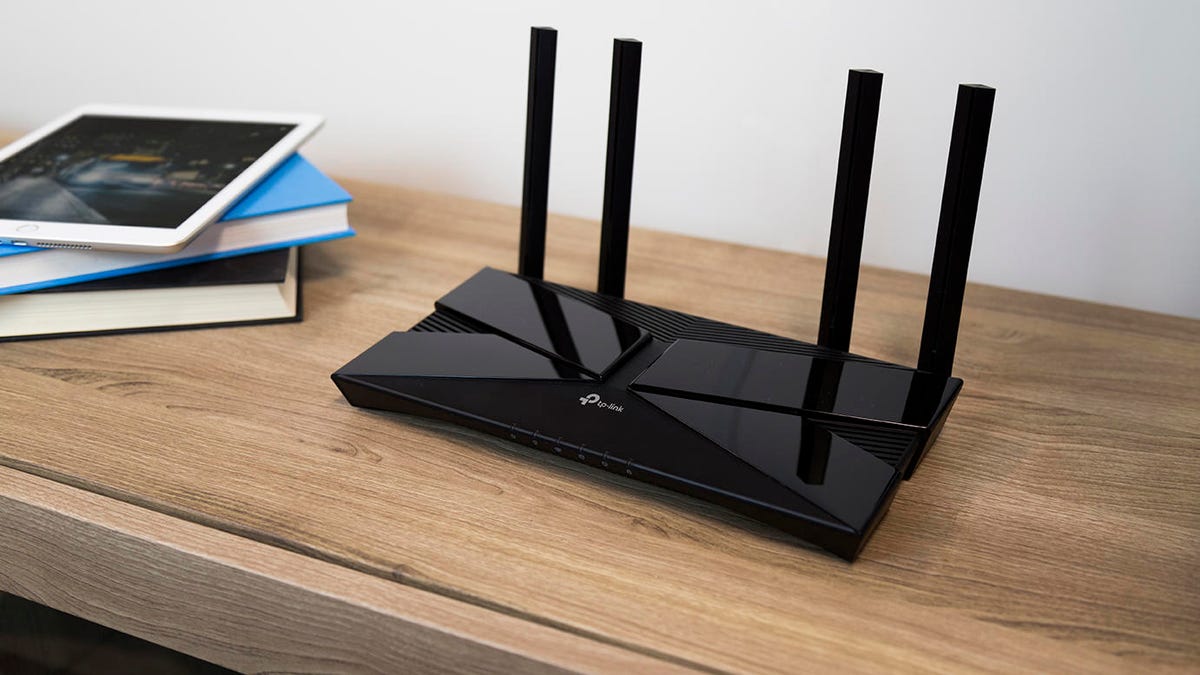Want Wi-Fi 6 right now? TP-Link's new routers start at $70
Available at Walmart starting next week, the TP-Link Archer AX1500 and AX3000 are the most budget-friendly Wi-Fi 6 routers yet.
OK, I was wrong. Absent a possible Black Friday blockbuster, I didn't think that we'd see a Wi-Fi 6 router sell for less than $100 until 2020. But here we are in early October, with new Wi-Fi 6 routers from TP-Link -- including one that costs $70.
Specifically, that'd be the new TP-Link Archer AX1500, which you'll be able to buy at Walmart starting next week. Like the "AX" in the name suggests, the router supports 802.11ax, which is the technical name for Wi-Fi 6 -- the newest, fastest version of Wi-Fi. As for the "1500" bit, that tells you the combined theoretical maximum speeds of each of the router's bands: 300 Mbps on 2.4GHz and 1,200 Mbps at 5GHz. It also boasts a 1.5GHz tri-core CPU, and 5 Gigabit ports in the back.
That 1,200 Mbps speed is right in line with the top Wi-Fi 6 transfer speeds that we've seen thus far in our test lab, but theoretical maximums tend to derive from optimal testing conditions that lack real-world variables. Use the thing in a busy home with lots of walls, devices and signal interference from the neighbors to contend with, and you'll likely see speeds that are a lot lower.
Locating local internet providers
And don't expect to see speeds any higher than you're paying for from your internet service provider. Those ISP transfer rates are like your local network's speed limit, and there's nothing that a Wi-Fi 6 router or any other router can do to speed them up.
Still, 802.11ax has a lot to offer for anyone looking to future-proof their home's internet connection. Along with faster top speeds, Wi-Fi 6 routers are much better at wrangling lots of connections at once, and manufacturers claim that they'll be a lot better at minimizing interference from those pesky nearby networks. Wonky new features like OFDMA and improved MU-MIMO should help them sling signal to all of your devices more efficiently, too.
Locating local internet providers
Read more: Give the gift of a better, faster router for the holidays | The best Wi-Fi routers in 2019
Of course, you'll need Wi-Fi 6 devices to take advantage of those upgraded features. Those are just starting to make their way to market -- most notably the iPhone 11 and the Samsung Galaxy S10. If you don't have a Wi-Fi 6 phone or laptop like that, don't worry -- Wi-Fi 6 is backwards compatible, so older devices will still be able to connect, too (albeit without a lot of those Wi-Fi 6 benefits).
TP-Link's other new Wi-Fi 6 router, the Archer AX3000, bumps the top theoretical speeds up to about 2,400 Mbps on the 5GHz band and a little under 600 Mbps on the 2.4GHz band, and it adds in a USB port, too. Like the AX1500, it arrives at Walmart next week. The asking price: $130.
If you're looking to buy in with Wi-Fi 6 right now -- or if you have a fancy new phone with a Wi-Fi 6 radio of its own that you're itching to take full advantage of -- then these might be pretty tempting. And $70 is obviously a lot less painful of an upfront asking price than high-end Wi-Fi 6 workhorse routers that cost upward of $300 or more. That said, I think most of us can afford to wait and see what our options look like next year.
At the very least, give us a few weeks to test the things out and let you know how they perform. We'll get right on it faster than you can say orthagonal frequency division multiple access, so stay tuned.


